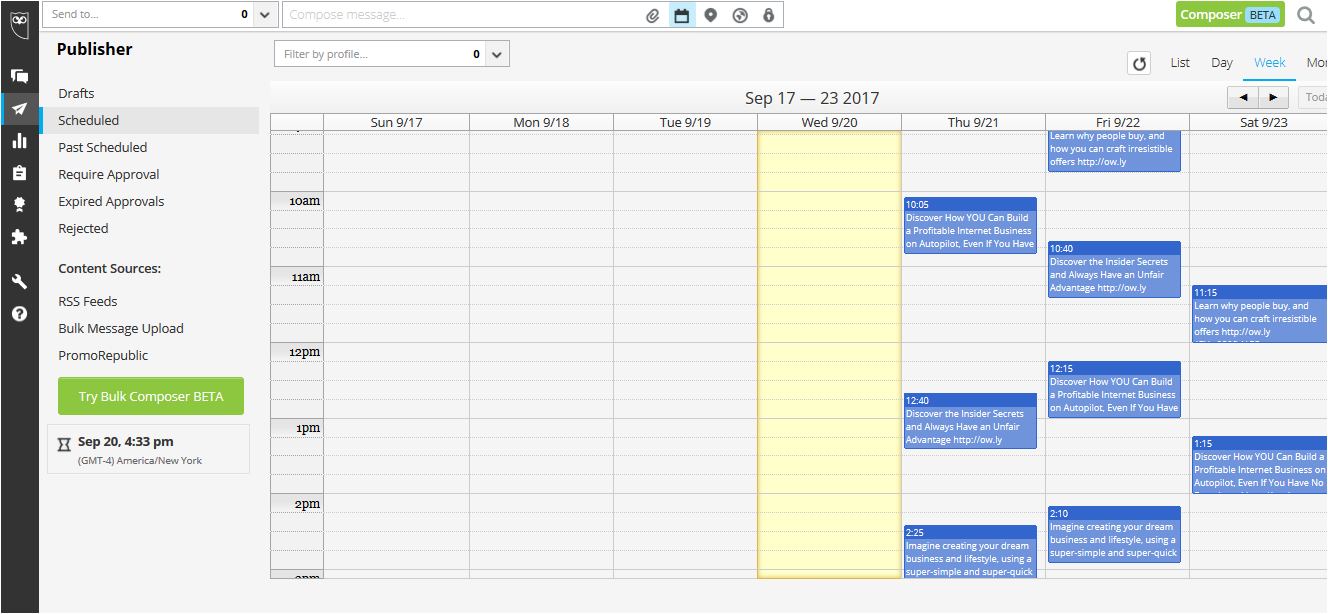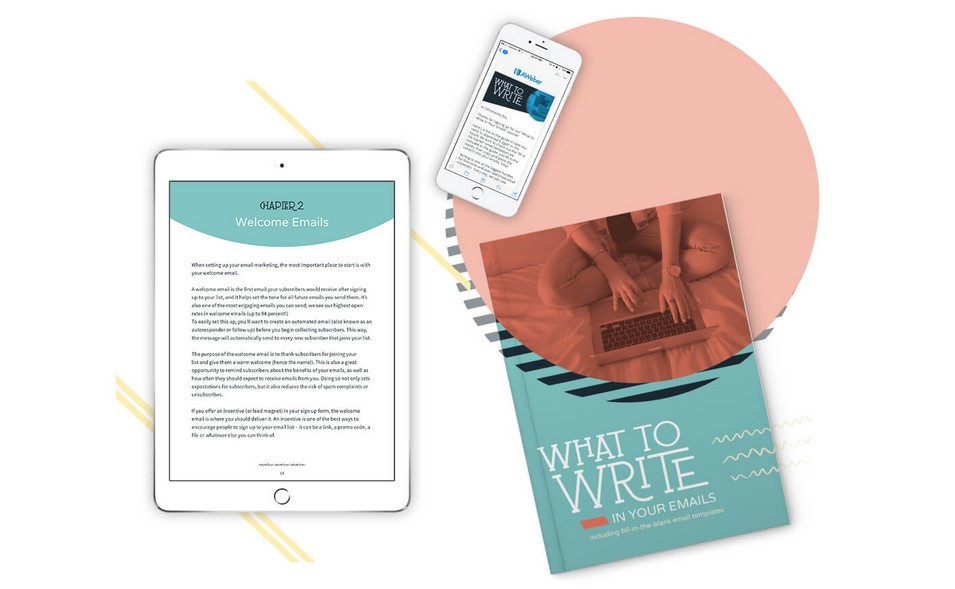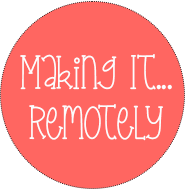Did you know that welcome emails get dramatically more opens than regular emails... nearly 400% more opens to be exact, plus over 500% more clicks?
Based on the open and click through rates alone, it's easy to see that a welcome email is your most important sales and marketing resource.
More of your audience will engage with this email than any other email you’ll ever send.
So make sure it delivers.
We'll show you how in this article.
Ready to Get Started?
Let's Cut to the Chase
Download a free getting started guide that shows you what to write in your emails. Set up your welcome series and improve any existing emails you're currently sending out.
What is a Welcome Email?
It's an automated email message that is sent out to new subscribers as soon as they sign up for your email list. Your email marketing provider handles this task using an auto-responder that you set up. More about that later.
The thing to note is that you're not limited to a single welcome email – you can opt to send a series of them.
These welcome series are sent out over time, usually one per day, and are typically a sequence of three to seven emails.
If you are looking for a way to build an audience of engaged, loyal customers, it's important to make a connection that creates the know, like an trust factor. When people know, like and trust you, they tend to engage more, they listen when you make recommendations, and they will eventually buy from you.
However it's common for business owners to overlook list building altogether or they don't give it much thought at all. And because of this oversight many of us struggle to find an audience.
And you know what I always say about an audience... if you don't have an audience, an interested, engaged group of people you can talk to about your products and services, you don’t have a business.
One of the best ways to build an audience without breaking the bank, is by list building. Creating an email welcome (and if possible) an educational series that you send to new subscribers when they sign up is one of the best things you can do for your business.
The Best Way to Automate List Building
Setting up a series is one of the best ways to automate the front end of your business. If you take a moment to set your welcome series up right, with earning passive income in mind, you'll have engaged, loyal customers for years to come.
If you do it wrong, gloss over it, or send out garbage, you'll lose many great opportunities in the process.
If you don't meet the needs of your audience, they will unsubscribe and move on. You will lose an opportunity to build a relationship with a potential customer, word of mouth referrals and you'll continue to struggle to find people to talk to.
Who can afford to do that these days?
One of the first things you'll need is an email provider. We recommend aWeber to new business owners because of their long standing reputation as a trusted provider, their training, customer service and their free landing pages. For details on building a community with an email marketing system click here.
How a Welcome Series Can Help You Build an Audience
A welcome email, because of the high open and click through rates, sets you up for success with your audience from the very beginning by helping you make that much needed connection.
It's your best opportunity to grab your potential customer's attention and make a great first impression that will set the tone for your relationship with potential customers over time.
This welcome email series is your opportunity to shine.
Remember, you only get one chance to make a great first impression. You want customers that buy from you, and tell their friends and family about you as well.
Reasons to Create a Welcome Email Series
One of the best reasons to reach out via email is that everyone has it!
The second reason is that many email marketing providers will allow you to build an audience of at least 500 people for free.
Building an audience using this strategy is one of the best ways to get your products in front of a targeted audience.
Finally, email is still a fast, efficient, economical way to build and grow an audience. It's very important because it's how you are going to start seeing results in your online business.
Building Relationships That Last
If you're seeking to build a strong relationship with potential customers and establish a credible presence in your industry, the combination of a welcome email and an educational series can be invaluable audience building tools.
Taking time to craft thoughtful emails and using this strategy serves a dual purpose. It starts as a gateway to welcome new prospects and provide them with valuable insights into your business. You can also show potential customers around and help them understand how your business can help them.
By offering educational content, you can position yourself as an authority... a trusted resource... the "go-to" person, ultimately leading to increased customer loyalty and conversion rates.

Define Your Target Audience
Before diving into creating your series, it's crucial to have a clear understanding of your target audience. Identify their pain points, interests, and challenges.
Tailor your content to address these specific needs, and this will ensure that your series resonates with potential customers and keeps them engaged.
Crafting a Compelling Welcome Email Series
The first impression you make with potential customers is critical. Your welcome email series sets the tone for the entire relationship so don't skip this massive opportunity. Make each email short, sweet and to the point while conveying the elements that we'll discuss here.
The focus of this welcome series is about making a connection and positioning yourself as an authority.It's about becoming the "go to" person in your niche, the trusted resource about whatever it is your business does.
While you'll sell at some point in the series, it's important to focus on making that connection in the beginning that gives your new subscriber a glimpse into your business and an understanding of how you can help them.
Make your series personal, warm and engaging while keeping it short and to the point.
Here are some ideas you can include in your welcome series:
Headlines: Write an amazing headline (subject line) that will motivate your new subscribers to open your emails. For example, ask a question that reminds your subscriber what they signed up for as your first headline. For subsequent emails, pose a question about something that gets your new subscriber thinking about what you'll be discussing in the email.
And keep in mind that your subject line is what gets you emails opened, so spend time on creating them.
Test out different headlines to see what works for your audience.
Email 1: In the body of your email, welcome subscribers to your list and offer a short, concise statement that tells them who you are and how your business can help them. Use the recipient's name and express your gratitude for their interest in your business.
Ask them to reply to your email to say hi and confirm that they received your free resource.
If they didn't receive it, provide a link in this email to the free resource and let them know how they can ask questions or get help.
Email 2: Share your unique perspective and insights on the problems readers are facing. Maybe share a story about experience you've had with the problem addressed in the free resource and your upsell.
Ask a clarifying question that gets your prospect in touch with the problem your free resource (the one they just signed up to get) and your product or service can help them with.
If possible, tell a short story that emphasizes that you understand the problem and their pain. This will help to get your audience's attention and helps you connect with them.
Clearly and briefly outline what they can expect from the free resource and relate it to the series.
Provide 1 - 3 bullet points that relate to the topic (hopefully those related to details on the free resource and your upsell) with the problem or challenge you'll cover and the benefits (what's in it for your audience) they'll gain from reading or watching your content in the series.
Keep in mind that you're positioning yourself as an authority or someone your audience should consult when they have problems like the ones your free resource and product addresses.
Email 3: This is where you put all the pieces together. This is the email that will set the stage for an upsell to the paid solution (product) your company offers.
It's a transition point that walks your audience through how to use your free resource and introduces a related or complimentary paid product as the total solution to the problem.
Provide a short video or brief written explanation of how your paid product will help your new subscriber reach his or her goals and/or make a complete transformation.
You may also include a short scenario that shows what might happen if they don't take action to solve the problem or challenge.
Invite your new subscriber to buy the paid product and provide a link to the sales page that will allow your new subscriber to make a purchase.
Scarcity Offer: As an option, you can provide a discount on the paid product for new subscribers for a limited time, to get anyone off the fence who might be thinking of buying the paid product. Be sure to set up the timeline in your shop so that the discount will expire on the date you specify.
Email 4: Think about the questions and any objections or skepticism your audience may have about using your product or service. This is a good place to address top concerns and objections. In this email you might want to include a link to an FAQ section or provide a video that addresses top questions you've received.
Remind your audience about the product, and the benefits they'll receive when they buy it. If you are using a scarcity offer be sure to let them know when the offer expires.
Email 5: Present your final pitch to your new subscribers. Briefly restate the problem and the benefits your subscriber will receive when they have your product in hand. Give them an easy way to quickly and easily buy your product.
If you need some ideas for a quick final pitch, check out our article for insight on how to put together a quick 30 second elevator pitch.
What's Next: Maybe an Educational Series?
Once your audience has been properly welcomed, you don't want your contact to end. You can set up an educational series that shows your audience how your ________ (brand, expertise, unique perspective, value driven content, discounts, and solutions) can help them.
Your educational series should aim to showcase your expertise while providing value to your audience. Identify topics that align with your business and cater to the needs of your audience.
Then send a daily, weekly or monthly digest that you send to your audience. How often you send emails is unique to your audience.
How often your send your emails has to do with (1) audience preferences, (2) the amount of content you have to share and (3) the frequency that you can manage, so that you're consistent.
Schedule out your emails to make it easier to stay on track and engaged with your audience. You can also use RSS Feeds to send an email when you post a new blog post and that's a good way to keep your audience informed.
For example, if you run a digital marketing firm, topics could include "10 Proven Strategies to Boost Social Media Engagement" or "Creating High-Converting Landing Pages."
Diversify Your Content Format
Keep your educational series engaging by offering content in various formats. For example, some people prefer reading articles, while others enjoy watching videos or listening to podcasts.
Mix and match formats like blog posts, videos, infographics, webinars, and downloadable resources to cater to different preferences and learning styles.

Establish a Consistent Schedule
Making contact with new subscribers to start your welcome series as quickly as possible after someone signs up is key to building a loyal, engaged audience.
Your subscribers are bombarded with messages, from social media to emails and texts. So it will be really easy to forget about your business if you don't strike while the iron is hot.
If you wait to send your welcome message, and your subscriber has forgotten about your business, they will most likely not open your email. At that point you have lost your ability to get their attention.
Once you get your subscriber's attention, it's important to keep a consistent schedule for your marketing message, whether they are delivered on social media, email, or another platform.
Consistency is key to maintaining the attention of your audience. Decide on a schedule that you can realistically adhere to, whether it's weekly, bi-weekly, or monthly is important. This consistency will help build anticipation among your subscribers and keep them coming back for more.
Interact and Encourage Engagement
Encourage interaction with your audience throughout the series. Include calls-to-action (CTAs) that prompt them to leave comments, ask questions, or share their insights.
Respond to comments promptly and facilitate discussions. This interaction not only builds a sense of community but also shows that you value your audience's opinions.
Offer Exclusive Benefits
Reward your subscribers for their loyalty by offering exclusive benefits or bonuses during the series. These could include early access to new products, special discounts, or access to private webinars or events. Providing tangible benefits helps build a sense of reciprocity and further strengthens the relationship between you and your potential customers.

Measure and Optimize
Use tools like Google Analytics to track and measure the performance of your welcome and educational series (an all other email campaigns) to understand what works best for your audience.
Analyze open rates, click-through rates, and engagement levels for each piece of content. Use this data to optimize future content and tailor it to your audience's preferences.
Free Download
Free Guide: What to Write In Your Emails
Including 45+ Fill in the Blank Email Templates

Items Needed to Create an Amazing Welcome Email Series
1. An Email Marketing Provider
Your email marketing provider will be the platform you'll use to set up and deliver your welcome and educational series. It's important when setting up your series to work with a provider that allows you to create automation.
Those automations are the tools that will enable you to send emails each day for a period of 5 - 7 days or whatever timeframe you decide.
The goal when selecting an email marketing provider is to make sure that you can create automation, and take note of the number of subscribers they will allow you to have before you have to pay for the service.
We use aWeber, Brevo, and MailChimp and recommend them to our community. They have their pros and cons, please review each plan to find a solution that works best for you.
2. Valuable Content
Knowing and understanding your ideal customers will give you the keys to creating content that will be valuable to them.
It also builds credibility and positions you as an expert with your audience if you provide valuable content (on your blog or platform) that explains or elaborates on the topics you discuss in your email series.
The goal should not be to sell at this point, it should be to educate. Selling before you build a relationship with potential customers is like meeting someone for the first time, and proposing marriage on the first date.
If you load down your emails in this initial series with advertisements and links to products, and you don't add real value, you will lose your subscribers. So try to avoid sending them directly to offers in your initial email series.
If you send them to additional information on your site and they navigate to, or just happen to "stumble" across your products and affiliate links that's a different story. The goal is that you don't come across as trying to sell at this phase of the relationship.
If you do a great job of knocking off their socks off during this initial phase of bringing your subscriber into your audience, there will be plenty of time to sell.
Types of "Non Salesy" Content to Share
To support what you discuss in your email series you can use infographics, images and charts that support what you are talking about. So your emails can include links to interesting "non-salesy" material that will help your potential customers reach their goals, solve problems or obtain new ideas.
Here are a few other non salesy pieces of content you can share with your subscribers:
- A relevant free course will help you show your expertise about your niche. It will also give your subscriber a free way to learn about your teaching style and assess whether you're a good fit for helping them reach their goals.
- Offer other free material (a podcast or video series/playlist) that does a good job of explaining a topic that keeps your subscribers up at night.
- A blog post
- A free guide
These kinds of educational pieces will stand out to your subscribers and go a long way to building that know, like and trust factor we talked about in the beginning of the article.
Videos and podcast episodes are great ways to connect with your audience. Podcasts are convenient ways to reach them while they are doing other things like working out, driving, doing housework, studying and more.
3. An Explanation of Your Lead Magnet
If you use a lead magnet, after welcoming your new subscriber, you could include an explanation of how to use the lead magnet in your welcome series. You might also provide some supplemental content, like statistics, case studies, and demonstrations that will elaborate on points made in the lead magnet.
4. Next Steps
A description and Call to Action that outlines the next steps you want your subscribers to take. This is your opportunity to take your subscribers to the next stage of your buying process.
Creating a welcome and educational series is a powerful strategy for entrepreneurs to educate potential customers about their business while building strong relationships.
By providing valuable content and engaging with their audience, entrepreneurs can showcase their expertise, gain trust, and increase the likelihood of converting prospects into loyal customers.
Remember to stay consistent, interact with your audience, and continuously optimize your content to ensure your series remains a valuable resource for your customers.
Happy creating!
Subscribe to Our YouTube Channel
We're helping creative business owners go from stuck and confused to empowered and thriving one video at a time.


